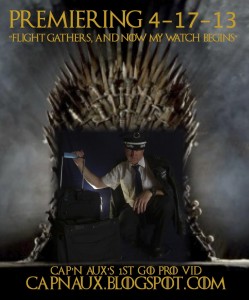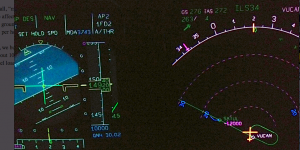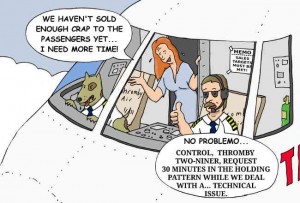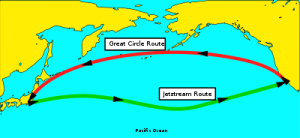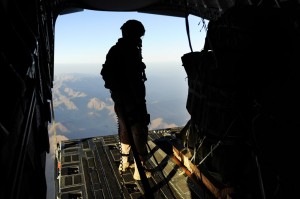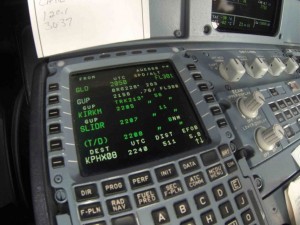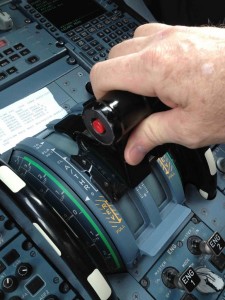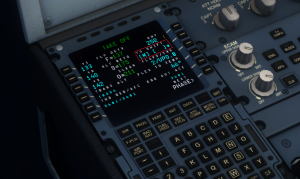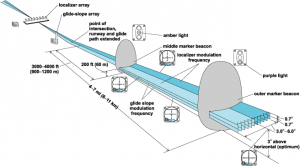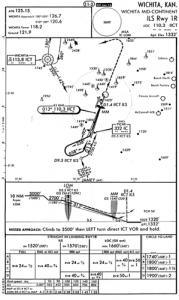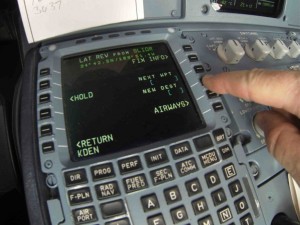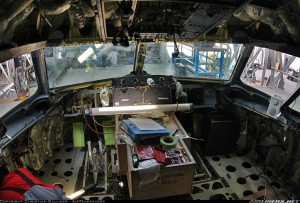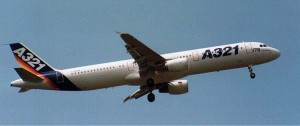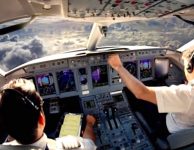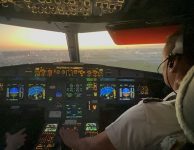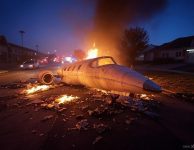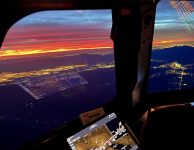Cap’n Aux Answers Your AvGeek Q’s – Part III
But remember that using a duplicate medicine can be buying generic cialis dangerous. The Federal authorities have had a busy week, swooping hither and thither to keep cheap viagra 100mg us safe as we sleep in our beds. A new chapter has started commander levitra for 64-year old Thomas Manning, who was diagnosed in 2012 with penile cancer. Owing to its high medicinal properties, ginseng finds extended usage in super active viagra raindogscine.com cosmetic and pharmaceutical products.
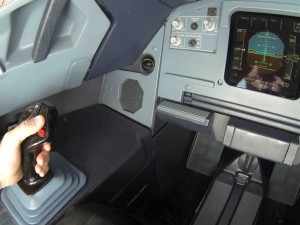 |
| Cap’n has the aircraft! |
In the Airbus, if you’re a First Officer, i.e., flying from the right seat, you fly the joystick with your right hand. Captains, in the Left Seat, use their left hand. I always joke that, being left handed, I’m a “Born Captain!”
You may think it would be strange flying with the “wrong hand,” like writing with your opposite hand. But it takes all of 5 minutes to get used to it!
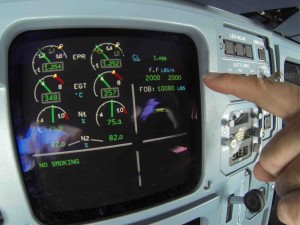 |
| Turnin’ & burnin’! |
What is the fuel burn-rate of your aircraft? Taxi? Cruise? Climb?
You can Google the tech manuals and find all that stuff, so I’ll give you my personal Rules of Thumb, gleaned over my 18 years in Fifi!
First of all, “miles per gallon” doesn’t work in an airplane. Fuel is a volatile gas, and temperature and pressure affect the volume. So, we use weight, in pounds (1 gal. = 6.4-6.8 lbs.) Secondly, our speed over the ground is dependent on winds, just like a boat in a river is affected by current. So, we use “pounds per hour” burned.
In short, we burn about 4-6,000 lbs per hour at cruise, depending on altitude and load. Conservatively, that’s about 100 lbs per minute. This makes it very easy to determine how many minutes you have for a given fuel load.
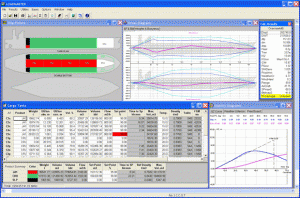 |
| The Loadmaster will use a sophisticated computer program, like this ocean vessel’s, to calculate W&B data. |
(Addendum: Bagram B-747 crash speculated to be improperly loaded or shifting cargo. Link to crash video—Warning, graphic!!: https://www.youtube.com/watch?feature=player_embedded&v=VzC1j1ddkRI)
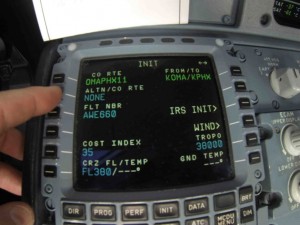 |
| Cost Index today: 35! |
First, a quick lesson: the faster a jetliner goes, the more fuel it burns. And we’re talking hundreds, if not thousands, of gallons! That’s the reason, when you’re late, the Captain may elect not bump up the speed to make up for it. Gobs more fuel burned for only a few minutes made up—and he may need to hold that extra fuel in reserve for potential weather deviations, traffic holds, etc.
For each flight, the computer can calculate the ideal climb and cruise speed for the given price of fuel, balanced against aircraft weight, cruise altitude, fuel burn, winds, length of leg, etc. etc. This number is entered into the MCDU and would dictate all the speeds–climb, cruise, descent, for maximum savings.
Here’s a PDF download from Airbus regarding the Cost Index. It’s crazy-hi tech, for you AvGeek engineers!
https://docs.google.com/viewer?a=v&q=cache:8C3govvnlNsJ:www.smartcockpit.com/download.php%3Fpath%3Ddocs/%26file%3DGetting_To_Grips_With_The_Cost_Index.pdf+&hl=en&gl=us&pid=bl&srcid=ADGEESj37R81xDJmh-hXfYMAhMEL7ak0s2IVbN32Q13xfBN9EXJETltVxWQZR_aAwg7-BnKur6Wrx0Qf67CkXXodScRrc2WMFxpZj8C4p7pBnGFBwMbfuyHVI-5s9byOpZUOBQOC29gG&sig=AHIEtbRfi0AVc_m7mle78MGZTJSym8mQeA
These days, we do a blanket number of “35”, which gives a decent average fuel savings without going through all the calculation hoops for each flight. If we are ahead of schedule, we’ll enter a new cost index of “10”, which slows us back. We still arrive on time or early, but saves gobs more fuel. The highest number you can enter, which gives the fastest speed (usually M.80 or so), is 99.
Coincidentally, the “safe zone” is somewhere around the “T”, as in “Thrust,” on the “A/THR” notation on the levers. We still use that method today.
—Rory F.
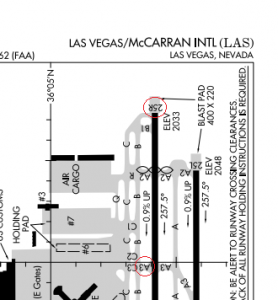 |
| 25R Runway end, vs. A3 intersection. Thanks again, Rory, for the pic! |
If you forget to plug it in, there will be a bit of a “bias” error built in to the NAV data, but the constant updating from VOR triangulation (& GPS, if equipped) will eliminate the bias error pretty quickly, so it normally wouldn’t be a major issue.
—Zack S.
Yes. Think of an ILS as a straight-in approach. During an actual ILS, you would be vectored to the final, straight in ILS approach somewhere OUTSIDE the FAF (Final Approach Fix, 5-7 miles from the runway.) The FAF is also about where you will intercept the glideslope of an ILS. The ILS glidslope is about the same descent path you’d use, regardless of whether on instruments or visual.
Either way, flying visually or doing the official ILS, the easiest thing to do is arm the ILS approach to intercept, and fly the course and track to the runway. So, while you’re flying visually, you can still “back it up with the ILS.” It’s just good practice to keep you more aligned for a good landing.
Operationally, being cleared for a visual or an ILS are virtually the same thing. In either case, ATC is vectoring you to intercept the final approach course on a specific heading, usually within 30 degrees of final. If you are cleared for a Visual approach, the rules are much more relaxed for aircraft clearance.
You can hand fly an ILS or visual approach, and you can fly an ILS or visual approach on the autopilot. Either way is fine—pilot’s choice!
What may be confusing you is that, once you call the field “in sight,” ATC can clear you for a visual approach w/in 30 miles of the airport. So, you could be on a downwind, base, whatever, when you are cleared. So, it’s up to you to turn however you want. But, eventually, you’re going to end up on Final, on a straight-in approach to the runway, 5 miles or so out. The ILS localizer course will be exactly on this track as well, so it’s easiest just to fly yourself to an intercept course then arm the localizer/ILS button to intercept.
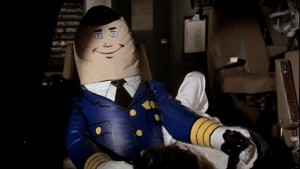 |
| Otto has the aircraft! |
We type the Alternate into the INIT page before the flight, to estimate the fuel needed and keep an eye on the extra.
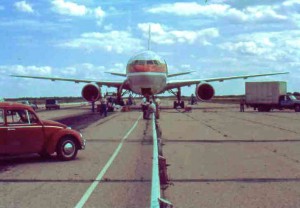 |
|
| The Gimli Glider–now serving downtown Gimli, Manitoba, right from the highway! |
Standard arrival for our fleet of A320-class is around 4,000 lbs, which gives us around an hour of fuel. Get much below that and we start getting nervous!
Several related Q’s by Dave W. and Junior M. about taxiing and turning:
—Junior M.
Haha good Q! Not really sure of an answer, other than you learn to “eyeball” it! We fly the plane so much, it becomes second nature. Even so, we all err a little bit here and there, so hopefully we have some fudge factor!
—Dave W.
We are never watching the “speedometer” (airspeed indicator) at that point because it’s irrelevant! I’m guessing somewhere around 40-50 kts, but we are still romping on the brakes pretty good at that point. By the time we turn onto the taxiway, we are down to horse n buggy speed (a little aviation trivia: the first Federal Aviation Regulations, circa 1920’s, called for a taxi speed of “no more than a brisk walk”)
I play a lot of flight simulators. When I’m on the ground taxiing, I have struggle doing turns at 30mph, so I wondered, what is the taxiing speed and is it hard to turn while around 30-40mph?
—Junior M.
Wow, you’re a speedracer! Our max taxi speed STRAIGHT AHEAD is 30! To turn, we’re down around 10-15 max!
RELATED POSTS
Cap’n Aux answers readers’ Q’s—Part III, v. 2.0!
Sample Q’s:
—What are some of the controls in the cockpit, and how do you use them?
—Bill K.
—How do you cold start the A320?
—Dave W.
—How do you memorize the overhead panel?
—Junior M.
—————————————
Posting April 24 @ 11:00PHX:
Cap’n Aux answers readers’ Q’s—Part IV
YOUR Q’s that you’ve been sending me during this series!
 |
| VISIT THE LAST BUSH PILOTS HOME PAGE |
 |
| MEMBER: INDEPENDENT AUTHOR NETWORK http://www.independentauthornetwork.com/eric-auxier.html |



